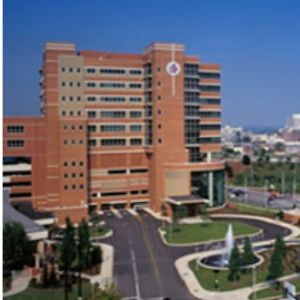

This new facility and the generosity of many donors enabled St. Vincent Hospital School of Nursing, Vincentia, sixty years after her celebrated birth at Fall Creek, was asked to assist with the birth of the first baby at the new hospital. With the army’s assistance, the Sisters, staff and patients were moved to the new location in three hours and twenty minutes. As these additions presented an even greater need for expansion, the hospital moved in 1974 to a new site on 86th Street. It opened its first heart clinic in 1952 the first coronary care and intensive care units in the city in 1963 and the Gatch Surgery Center in 1972. Vincent increased its focus on specialties. In the latter half of the twentieth century, St. By 1945 it had a full-time pathologist and an orthopedic surgery residency program was established in 1947. It was approved for medical internships in 1914 and by the American College of Surgeons in 1921. It was the hospital chosen by President Theodore Roosevelt when he passed through Indianapolis in 1902 and needed immediate care. Vincent Hospital’s national reputation grew, as did its services. In celebration, the first baby born there was named Mary Vincentia Connor.ĭuring the first half of the twentieth century, St. Vincent Hospital opened on Fall Creek Parkway.
ASCENSION ST VINCENT STRESS CENTER WINDOWS
Vincent yesterday that it made dents in the opposite walls and some of the bits were buried in the doors across the room…The beautiful and valuable stained glass windows of the chapel on the east side of the hospital were entirely destroyed … The heat from the explosion was so intense that the paint on the outside of the window frames on the east side of the building was blistered.” 7 Damage was estimated at $7000-$8000. “Glass was carried with such force from the windows of St. Patients and staff suffered minor injuries, but damage to the building was extensive. On June 6, 1908, the neighboring Prest-O-Lite Factory had a massive explosion, the third and most powerful of the year. The wisdom of their choice was quickly confirmed. In early 1908, the Sisters were granted approval to purchase land on which to build a new hospital. Unfortunately, this was also where many of the railroads were located, thus preventing a “peaceful” convalescence. In 1889, the hospital moved to an industrial area in downtown Indianapolis. “In addition to tending their patients, they scrubbed floors, repaired mattresses, made linens, milked cows, churned butter, gathered eggs, gardened, cooked, shopped, and raised money.” 6 Many of the skills taught reflected the times. Marsee was hired as the first house physician at $25 per month.” 5 In 1896 the hospital opened the St. Surgery was done at the bedside or on tables behind partitions.” 4 By 1885 “the number of infirmary beds was fifty, and Dr. “The original infirmary had no operating room. In 1884, their facility was legally incorporated as St. Their mission was “to serve those who are poor and vulnerable.” 3 Neither the patients’ religious affiliation nor their lack of income would play a role in their care. Amidst the protests of many residents who feared that a hospital would breed disease, the Sisters quickly transformed the seminary into an infirmary. In addition to their $34.77 stake in the project, the Daughters of Charity supplied the first nursing staff consisting of “… Sisters Mary Theresa O’Connor, Oswald Spaulding, Albertine Ott and Magdalen Kelleher.” 2 By the time the Sisters arrived in Indianapolis, Chatard was caring for patients in an empty seminary building near St. Chartard contributed $50 towards creating an infirmary. He requested the assistance of the Daughters of Charity, who had a relationship with Chatard’s alma mater. Indianapolis’s only hospital had opened in 1866 and could not meet the needs of the growing population, many of whose members could not afford medical care.Ĭhatard’s vision was to treat the spiritual as well as the physical needs of the community. There Chatard saw a population desperately in need of medical care. In 1878 he was appointed Bishop of the Diocese of Vincennes, but insisted on living in Indianapolis. Mary’s College with a doctorate in medicine, but in 1862 answered a stronger call, the priesthood. Chatard had been born in 1834 in Baltimore and his initial calling was medicine. What in the United States could be purchased with $87.44 in 1881? In that year Bishop Francis Silas Marean Chatard and four Daughters of Charity 1 took that sum and funded the first Catholic hospital in Indianapolis.


 0 kommentar(er)
0 kommentar(er)
